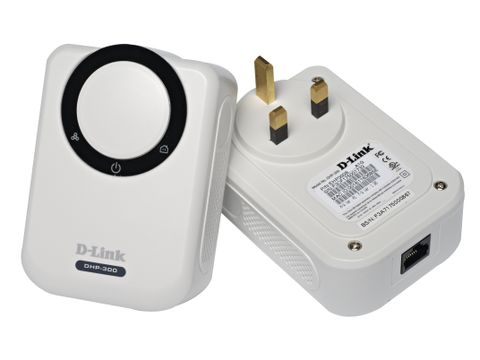TechRadar Verdict
Once 802.11n setttes in, a kit like this will make little sense
Pros
- +
Simple to use
Decent throughput
Cons
- -
Expensive
Why you can trust TechRadar
To call power line networking a bandwagon is perhaps too much of a cliché, but debating the lexicon of the English language is irrelevant; more and more networking vendors are jumping onto it. But quite why is a mystery. The core reason for buying a kit that can network non-wirelessly with high throughput is about to fall away with the arrival of 802.11n.
True, wireless is still less than easy to set up and configure, while 802.11n will remain far from established even a year from now. Yet the key selling point of 802.11n is that it can stream high bandwidth files, including HD video. That's a shame for D-Link then, because that's exactly what its new plugs are designed to do.
Just a quick recap in case you don't know. Powerline networking uses the electricity cabling in your home as a network - critically, this means that powerline kit can be used to network in situations where wireless networks don't cut the mustard, such as in very tall houses or even to extend a network to a basement. And, of course, it removes the need to trail wires anywhere. You can also use powerline throughout your house, providing you stick to the same mains loop.
Still standards
Despite the fact that powerline adaptors from different manufacturers aren't designed to work together, they can if they use the same standard - much like wireless networks. D-Link's adaptors conform to the DS2 standard (www.ds2.es), but in reality this is meaningless - if you're going to set up a power line network we always recommend all your kit is from the same manufacturer.
As you would expect, the plugs are easy to set up. Power line is designed to be simple. Just plug in, connect the Ethernet cables and install a software utility on one PC. The software part of the process - currently incompatible with Vista - configures the plugs and makes sure they have the same password, ensuring security, which has previously been perceived as a problem in the past.
Such perceptions are misguided, since although there have been scare stories about plug networks being accessible to your neighbours, a simple password is enough to prevent any problems and make sure the signals along your electricity cables are encrypted.
As an aside, the LED indicators on the plugs are simple yet effective. Most other power line kit doesn't provide this, and it's surprising just how hard it is to diagnose problems if you have no visual indication that your plug has either not detected any other plugs or, alternatively, doesn't even detect that it's connected to the Ethernet port on your PC.
Speed issues
This kit has a cited speed of 200Mbps, but as with wireless, don't be misguided by such absurd figures. On our first attempt we got around 24Mbps of real-world throughput from the network and thereafter we pushed it to get around 34Mbps.
These figures sound surprisingly low, but they highlight one of the major issues with this kind of networking - your network is only as good as your home wiring. And ours would, apparently, provide the Electrician of the Year with a real test. With old homes, you can expect your network to take a major bandwidth hit.
But there is a positive side to this. Our throughput figures are still good enough for all Internet streaming and multi-room net access. More crucially for our verdict, they're also good enough to push a 19.5Mbps MPEG2 HD file down our connection, though trying multiple streams didn't go too well.
If you're lucky, though, you may well find that in a new house you can get these plugs to push 70 to 80Mbps, so you'll be instantly able to watch two or even three HD streams over your network. Standard definition content transfers in multiple streams without difficulty and we were able to get three streams playing quite happily alongside each other.
While this isn't the most impressive performance, it shows that D-Link's plugs are more than adequate for basic home networking or HD streaming. At well over £100 for two plugs, powerline has a big problem in terms of cost-per-connection. You can buy more plugs, of course, but it'll cost you.
Once 802.11n has become more established in a year's time, it'll be nigh-on impossible to work out why you would want a kit like this. Even so, there are still a few months left when you may consider this worth buying.

